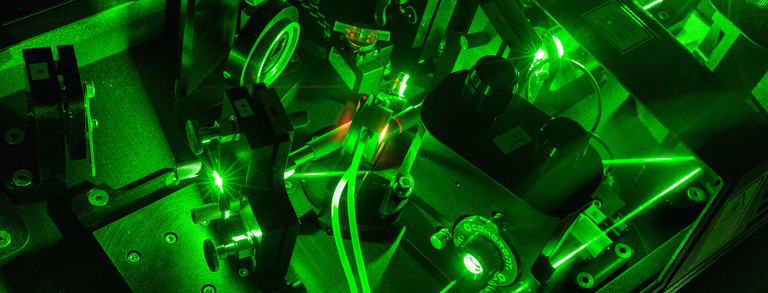Continuous Wave Spectroscopy
The Continuous Wave Spectroscopy laboratory is specialized in the observation of equilibrium states in semiconductor nanostructures. For that task the lab consists of two independent setups.
The first one is designed to be a multi-purpose setup allowing a wide variety of measuring techniques and a fast change between them. The techniques used consist of:
- Magnetic-field-dependent Photoluminescence,
- Photoluminescence Excitation,
- Selective Excitation Spectroscopy,
- Absorption/Transmission Spectroscopy,
- Spin-flip Raman Scattering Spectroscopy,
- as well as time-resolved variants of these techniques.
The main devices for the first setup consist of a split coil magnet cryostat and a triple-monochromator. The cryostat provides low temperatures for samples of about 1.8 Kelvin and high magnetic fields of up to 10 Tesla. The spectrometer used in this setup is a triple-monochromator. This spectrometer enables high resolution when it is driven in additive mode or it can be used as a variable optical filter with moderate resolution driven in substractive mode. For optical excitations multiple laser systems are installed in the continuous wave laboratory including Titanium Sapphire as well as Dye and solid state lasers. These laser systems provide wavelength continuously between 690 and 950 nm (Ti:Sapph) as well as broad excitation bands below 690 nm (dye solutions like DCM or Rhodamine 6G).
The second setup is specialized in Spin-flip Raman Scattering Spectroscopy. It consists of a split coil magnet cryostat enabling low temperatures down to 1.6 Kelvin and and a bipolar magnetic field in the range between -7 and +7 Tesla. The Spectrometer used in this setup is specially designed for the suppression of laser stray-light to analyze signals in the proximity of the laser itself. It has a focal length of 2 meters which grants a high resolution in combination with photomultiplier tubes or CCD-cameras for the detection.
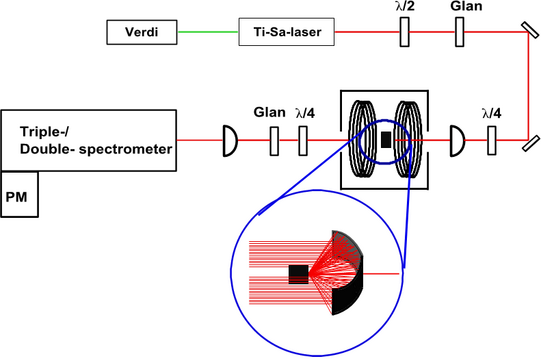
Research topics:
Diluted magnetic semiconductor (DMS) nanostructures
In DMS structures ferromagnetic materials have been implanted in the matrix of semiconductor nanostructures. These DMS structures can be both II-VI (as (Zn,Mn)Se) or III-V (Mn-doped GaAs) semiconductors and can be grown as structures of lower dimensions like Quantum Wells (2d) or even Quantum Dots (0d). The main feature of these DMS materials is based on their strong coupling between their d-states and the s- or p-states of the semiconductor. This results in huge electro-optical effects as it can be seen in the Giant Zeeman Splitting which shifts the energy of electronic or hole spin states by several meV at moderate magnetic fields of a few Tesla.
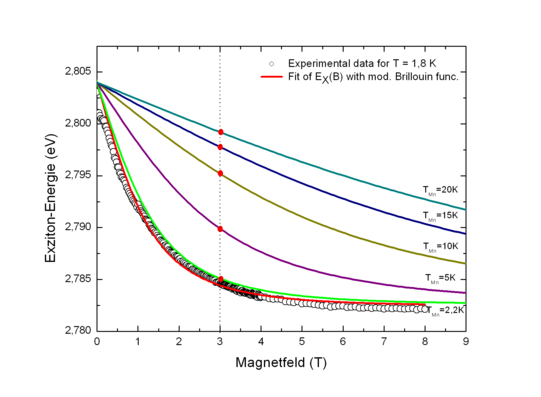
Confinement-driven indirect excitons in (In,Al)As Quantum Dots
The first and yet detailed characterization of newly developed semiconductor structures is one of the main goals in the continuous wave laboratory. One of the most successful studies regarding novel semiconductor structures are InAs Quantum Dots in an AlAs matrix. In an ensemble of Quantum Dots, small dots have indirect transitions in the k-space with very long exciton lifetimes in the range of tenth to hundreds of microseconds. Additional studies have proven that also their spin states are long-living which plays a key role in the storage of quantum information.

Spin-flip Raman scattering in low dimensional structures
In the field of Raman spectroscopy, materials are optically excited under resonant conditions. In the following a scattering process between the electro-magnetic wave and the material takes place in whose progress an excitation is absorbed/emitted increasing/decreasing the energy of the scattered electro-magnetic wave. Depending on the energy of the excitation the Raman signals can be found in close proximity to the laser line. In case of the Spin-flip Raman scattering the energy differences between electron spin states are in the center of interest. These states are split by a strong magnetic field field so that their energy difference can be described by the Zeeman splitting energy ΔE.
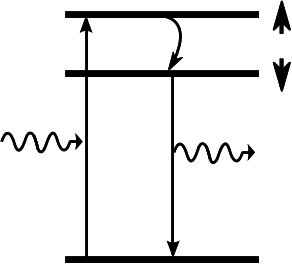
In this technique the higher energy spin states are resonantly excited by laser light with a narrow spectral line. The scattering process in this situation is accompanied by a flip of the spin state to the lower energy state. When this scattered electron recombines with its corresponding hole the energy difference between excitation and detection describes directly the Zeeman splitting. With normal measuring methods these measurements would be suppressed by the much more intensive laser stray-light. The specialized spectrometers in the CW lab on the contrary can cut off this stray-light very efficiently so that it is possible to detect signals as close to the laser as 100 µeV.
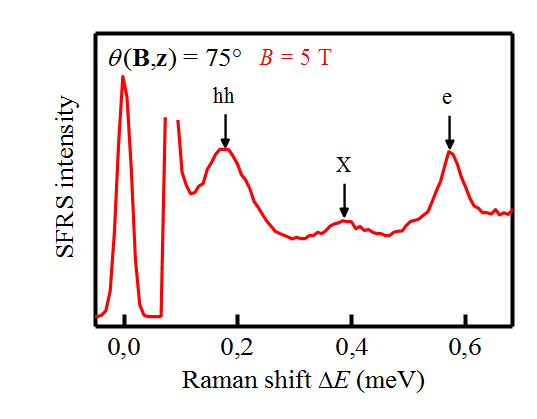
The CW lab team has focused its research in the past especially on Spin-flip Raman Scattering measurements in low-dimensional structures like quantum wells and quantum dots.
Current Offers For Bachelor-, Master- or PhD-Theses
We offer Bachelor-, Master- and PhD-theses in relation to the ongoing research. Feel free to ask someone of the team for more information! Usually there is always a topic available.
Contact
- Dr. Dennis Kudlacik
Collaborations
- Angewandte Festkörperphysik, Ruhr-Universität Bochum
- Ioffe Physical-Technical Institute, Russian Acadamy of Sciences
- Institute of Semiconductor Physics, Novosibirsk
- Institute of Solid State Physics, Chernogolovka



